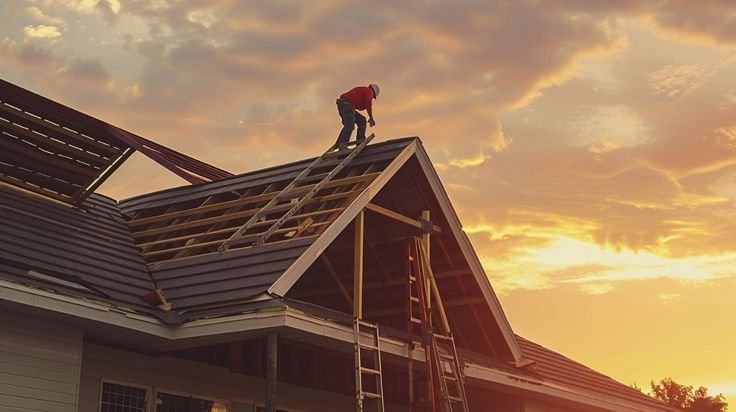Roofing level 3
About this course
Roofing level 3
Module 1: Roofing Materials and Components
Types of roofing materials (slate, tile, metal, asphalt shingles, etc.)
Underlayment, insulation, and ventilation systems
Flashing, gutters, and drainage components
Sustainability and eco-friendly roofing options
Module 2: Roof Construction Techniques
Structural principles (rafters, trusses, joists)
Flat vs. pitched roof construction
Weatherproofing and waterproofing methods
Safety considerations in roof assembly
Module 3: Advanced Roofing Systems
Green roofs and solar panel integration
Liquid roofing systems (e.g., EPDM, PVC)
Complex roof designs (valleys, hips, dormers)
Repair and restoration techniques
Module 4: Health, Safety, and Regulations
Working at heights (scaffolding, harnesses, ladders)
Risk assessments and method statements
Compliance with building codes (e.g., UK/BS standards)
Handling hazardous materials (asbestos, lead)
Module 5: Estimating, Planning, and Project Management
Cost estimation and material calculations
Reading blueprints and technical drawings
Scheduling and workflow management
Client communication and quality control
Additional Tips for Preparation:
Practical Training: Ensure hands-on practice for skills like measuring, cutting, and installing materials.
Assessment Prep: Review past exam papers or competency checklists for Level 3 qualifications (e.g., NVQ or Diploma in Roofing).
Industry Standards: Familiarize yourself with local regulations (e.g., UK’s NHBC standards or OSHA guidelines if applicable).
Comments (0)
Roofing involves various materials and components, each playing a crucial role in creating a durable and weatherproof roof. These include structural elements like roof decking, rafters, or trusses, which provide support; underlayment for water resistance; and the roofing material itself, such as shingles, tiles, or metal sheets. Additionally, components like flashing, drip edges, ice and water shields, and roof vents are essential for protection against water damage, debris, and proper ventilation.
Roof construction involves various techniques, including traditional methods like the Madras roofing technique and modern approaches like reinforced concrete and steel trusses. Different roof types, such as pitched (sloping) and flat roofs, each with their own construction techniques, are used depending on the desired aesthetic and climate. Sustainable options like green roofs and cool roofs are also gaining popularity.
Advanced roofing systems refer to roofing solutions that go beyond traditional roofing materials and designs, incorporating features that enhance functionality, efficiency, and aesthetics. These systems often integrate technology, such as sensors and data analytics, to optimize performance and energy usage, offering smart features like self-regulating ventilation and weather adaptation.
Health and safety regulations ensure workplaces are safe for employees, with legal obligations for employers to prioritize worker well-being and prevent harm. These regulations cover a range of aspects, from providing adequate training and welfare provisions to maintaining a safe environment and providing necessary information and supervision.
Mastering roofing project management means effectively applying project management principles and practices to deliver roofing projects successfully. This includes comprehensive planning, resource management, communication, risk management, and quality control, all while adhering to budget and schedule constraints.





